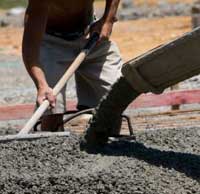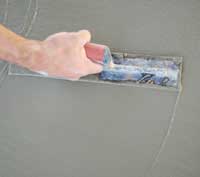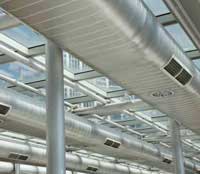Best Conditions for Faster Drying Concrete Times
Are you tired of waiting for concrete to dry during your building projects? Do you want to know the best conditions for faster drying times? Look no further!
In this article, we will explore the factors that influence the drying process of concrete and how you can optimize these conditions to speed up the drying time.
From controlling the moisture content in the initial mix to choosing the right finish and creating the ideal environment, we will provide you with valuable insights and practical tips.

Don’t let slow drying times delay your project any longer.
Read on to discover the best conditions for faster drying concrete times.
When planning a building project’s timelines, inherently, the time allotted for drying concrete seems to be one of the issues that affect many of the finish tradesmen late in the building process.
A variety of factors can influence the drying process and slow it down to the point of serious cost and inconvenience to the flooring and general contractor professionals who are waiting on it.
However, the good news is that it is also possible to speed up that process by setting up optimal conditions for allowing the necessary moisture (or water vapor) to leave the concrete slab.
The Right Concrete Mix
One of the first places to control the amount of moisture in a concrete slab is in the initial concrete mix. The higher the volume of water added to the concrete, the more will have to be removed through the drying process. Pretty basic, right?
The challenge with reducing water levels too much in the initial mix is that it comes with an increased risk of cracking due to shrinkage in the finished slab. It also reduces the natural routes that the moisture vapor uses to exit the slab and so can delay drying time instead of improving it.

Other options like desiccation agents or synthetic aggregate substitutes may help reduce the initial water content, but each comes with its own risks, so it is wise to research the options well. It might be a tradeoff that doesn’t really buy you any more time.
The Right Finish
Once the concrete is poured, the trowel finish that is applied will also impact conrete drying time. That slick, hard-trowelled finish can actually seal the surface of the concrete by “pinching off” the capillaries necessary to allow moisture to move to the surface and away.
A high blade angle, high blade speed or attempting to burnish too quickly can also have the same effect, so don’t rush the trowelling or your drying schedule may pay the price.
The Right Environment
The best way to optimize a drying schedule is to be sure that the ambient environment around the slab is under ideal conditions.
These conditions are a combination of ambient air temperature + ambient relative humidity above the slab + air movement + dehumidification equipment.

- Air temperature and ambient relative humidity (RH) work together in an inverse relationship to create the optimum conditions for moving moisture out of the slab and into the air. When the temperature rises, the air is capable of holding more moisture (higher humidity levels), so bringing the area to service conditions provides (in most cases) the ideal conditions for letting the slab dry as efficiently as possible.
- Air movement draws the moisture from the surface of the concrete slab in a cycle that allows more moisture to rise from within the slab and be drawn away until it has reached a point of equilibrium with the surrounding air.
- As the moisture is moving through the air and being circulated with air movement, having dehumidification equipment able to extract the moisture out of the air will allow for a continuous drying cycle. Most HVAC systems are simply not adequate to remove the moisture being released by the drying concrete, and if it only circulates in the ambient environment, the concrete will take a very long time to dry to installation specifications.
The right combination of these factors will create ideal drying conditions for concrete applications.

Free Download – 7 Things You May Not Know about Concrete Slabs
The Right Concrete Moisture Test
Ultimately, the only way to determine if your concrete slab is dried to specifications is to test the RH with RH testing, like the Rapid RH®.
Unlike traditional surface-based testing, RH testing goes within the slab to determine accurate moisture conditions. It’s a proven method for determining accurate levels before proceeding with a flooring application, or choosing the final flooring products based on moisture tolerances.
It can also be useful for determining the choice of applied drying measures based on the current moisture conditions of the slab and the project schedule.
The Rapid RH provides the “final” moisture conditions of a concrete slab if it were to be sealed (with a sealant or other flooring application) at that point in time, decisions relating to drying conditions and flooring application can be made with a complete and accurate assessment of the concrete slab.
With best conditions in place, and accurate RH testing to verify the process, drying times can be improved for excellent and lasting flooring results.
Jason has 20+ years’ experience in sales and sales management in a spectrum of industries and has successfully launched a variety of products to the market, including the original Rapid RH® concrete moisture tests. He currently works with Wagner Meters as our Rapid RH® product sales manager.
Last updated on January 11th, 2024




It was interesting when you explainED that concrete drying time is affected by a combination of temperature and humidity in the air. My husband and I are looking into having a mini-mix driveway installed because we like the rustic look of the mixed stone. Thanks for helping me feel informed and ready to discuss the drying time with a concrete contractor!
How long would it take a very small amount of concrete to dry around the bend of a toilet bowl
Arturo:
Thanks for the question. In a good environment, it will take 30 days for every one inch of thickness to dry to a reasonable level. Good luck.
what about steps that are concrete poured in steel pans? how long does it normally to cure?